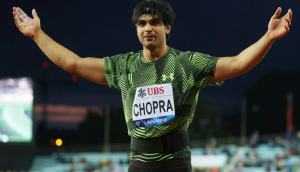
Despite the upgraded safety measures, Formula One (F1) cannot adequately be described as a mere "sport". It's a high-stakes theatre where men gamble with their lives every time they take out their mean machines in the labyrinth, labelled as race track.
Just like the gladiators who were either expected to be killed or incur a fatal injury, the F1 drivers are going faster than ever before, unaware of their fate. From 1954 and 1994, a total of 24 deaths in the history of F1 were recorded alongside numerous other life-changing injuries.
On 17 July 2015, French driver Jules Bianchi, unfortunately became F1's 25th fatality. The 25-year-old Marussia driver succumbed to the brain injuries sustained in a crash during the Japanese Grand Prix in October 2014. He was in a coma since the accident in which he collided at high speed with a mobile crane which was being used to pick up another crashed car.
Even though Bianchi is the first driver to be killed from injuries sustained during a F1 Grand Prix since Ayrton Senna 21 years ago, it still highlights a major issue. The fact that the existing safety measures and regulations in professional motorsport can never subdue the risks involved in the sport, is still a matter of concern.
It all began on 31st July 1954 when Onofre Marimon ran into a ditch and collided with a tree at the old Nurburgring in Germany during the practice session for the German Grand Prix. The Argentinian became the first fatality in the F1 history which was only going to increase in the coming years.
Here's a look at five infamous crashes that consumed the lives of F1 drivers on the race track:
Ayrton Senna (1994)
Although many years after Formula One's deadliest period in the 1970s, Brazilian Ayrton Senna's death marked the unthinkable. The sport's greatest driver at the time - and in many people's eyes, the greatest to have lived - died on television in front of millions of people, in an era when fans did not expect drivers to die in the name of sport. The Brazilian tragically lost his life during the San Marino Grand Prix in Imola after crashing his Williams car into a concrete wall at 145 mph.
A piece of the suspension assembly penetrated his helmet visor, and he died of fatal skull fractures. Senna's death was the second to have taken place in two days, as Austrian Roland Ratzenberger too had lost his life, after suffering a similar crash during race qualifying. During the team meeting before the race, Senna had raised concerns about the race going forward.
Gilles Villeneuve (1982)
French-Canadian Gilles Villeneuve was one of the most well-known F1 drivers to have never won a world championship. Villeneuve lost his life after a horrific and harrowing accident in qualifying for the Belgian Grand Prix at Zolder in 1982. With around 10 minutes of the final qualifying session remaining, Villeneuve caught the back of another car travelling around 140 mph, and was launched into the air.
His Ferrari was airborne for more than 100 metres before crashing into the ground and somersaulting along the track. Villeneuve's helmet was torn from his head by the crash as he was thrown a further 50 metres from his destroyed car into the fencing around the edge of the circuit. He died of a fatal neck fracture and was pronounced dead in the hospital that evening.
Ronnie Peterson (1978)
Ronnie Peterson, also known as the "Super Swede", was the championship runner-up twice during his career. In the 1978 Italian Grand Prix, the race started before all the cars were in their respective starting grids and as a result there was a massive crash which stopped the race for ten drivers. Peterson couldn't escape his car but he was rescued from the burning wreckage by fellow racers James Hunt, Clay Regazzoni and Patrick Depailler.
What makes this accident most unfortunate is that Peterson didn't die at the crash site but instead in the hospital over-night. Peterson suffered several fractures but remained conscious which led his doctors to believe nothing was wrong. However, his untreated bones bled bone-marrow into his blood-stream and caused a fat-embolism which eventually killed him - thus undoing the good of Hunt, Regazzoni and Depailler's heroic act. If not for his untimely demise, Peterson had every chance in the world to clinch the championship that year.
Tom Pryce (1977)
There has been just one Welsh driver in the history of F1 racing and his death resulted in some of the most gruesome footage ever committed to film. During the 1977 South African Grand Prix at Kyalami, Pryce and 19-year-old race marshall Jansen Van Vuuren both lost their lives. Renzo Zorzi, whose car had stopped off track, was being tended to by Van Vuuren and another race marshall at the Crowthorne Corner.
The duo were carrying fire-extinguishers to prevent the car from catching fire when Pryce, who didn't see the marshalls because of Hans Joachim-Stuck driving right in front of him, ran down Van Vuuren. Pryce was also killed instantly by the fire-extinguisher carried by Van Vuuren, which struck his head. His helmet strap also dug into his neck due to the impact and nearly decapitated Pryce. The remains of Van Vuuren were flung several meters away due to the impact. Van Vuuren was badly mutilated by the accident that he was only identified after the race through process of elimination.
Wolfgang von Trips (1961)
Having scored points in five of the six races driven at that point and been on the podium four times with two victories to his name, Wolfgang von Trips was on his way to becoming Germany's first F1 champion in 1961. However, the eighth race of the season turned out to be his last. During the Italian Grand Prix in Monza, Trips hit the back of Jim Clark's Lotus which sent the his F1 car flying into the air and into the audience before flying back on to the track.
Von Trips, who was flung away at a far distance following the impact of the crash, was proclaimed dead immediately by the medical team. The accident, which also claimed the lives of fifteen spectators in the process, is considered to be as gruesome as the Hillsborough tragedy which claimed 96 deaths during a FA Cup football tie between Liverpool and Nottingham Forest in 1989.






_in_action_250728_300x172.jpg)

![BJP's Kapil Mishra recreates Shankar Mahadevan’s ‘Breathless’ song to highlight Delhi pollution [WATCH] BJP's Kapil Mishra recreates Shankar Mahadevan’s ‘Breathless’ song to highlight Delhi pollution [WATCH]](https://images.catchnews.com/upload/2022/11/03/kapil-mishra_240884_300x172.png)

![Anupam Kher shares pictures of his toned body on 67th birthday [MUST SEE] Anupam Kher shares pictures of his toned body on 67th birthday [MUST SEE]](https://images.catchnews.com/upload/2022/03/07/Anupam_kher_231145_300x172.jpg)






